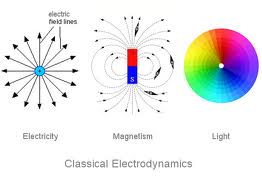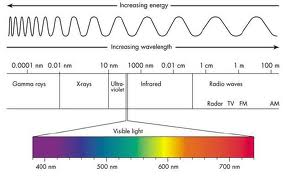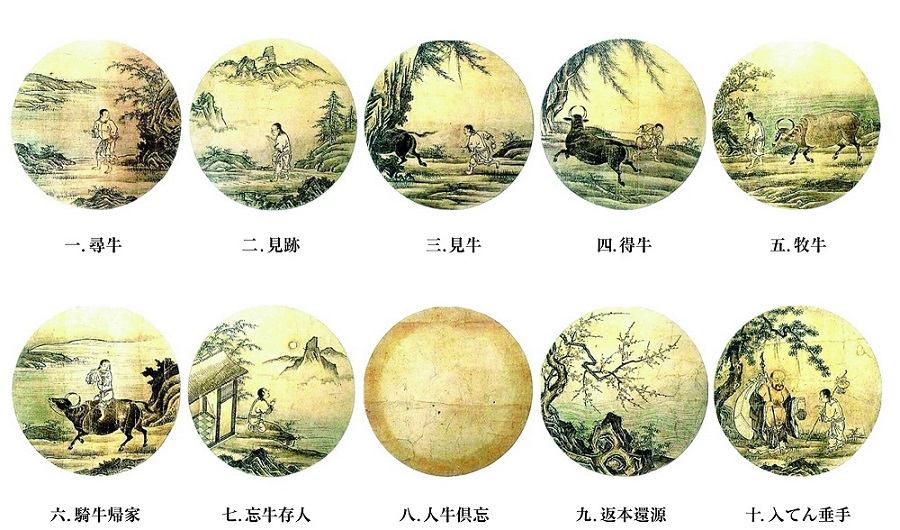[two_third]
Lesson 33: Creativity and the Emergence of the Cosmos
From what we can see from our vantage point, on planet earth, here and now, the known universe emerged mysteriously some 13.7 billion years ago in a great flaring forth of energy, with matter, in the form of elementary particles, mysteriously appearing and disappearing like bubbles and foam. In the metaphoric language of the mid 20th century, this became known as the ‘Big Bang”. Over time, as this emerging amorphous energy blob continued to expand and cool, fields of organizing intelligence began to reveal themselves and the universe as we know it began to take shape. Units of raw dynamic energy began to crystallize into matter in the form of the more stable fundamental particles such as electrons and protons, which eventually gave birth to atoms, galaxies and stars.
Modern science has defined four of these fundamental fields of organizing intelligence, calling them interactions, that govern the way in which the various structures of the universe move, change and relate. (Systems theory, which looks at how large collections of forms can develop complexity and the capacity for self growth uses these four interactions and a few more. We will develop this in the biology section.)
Two of these interactions operate at the sub atomic or microphase realm and, although they are unavailable for us to perceive without incredible powerful and complex scientific machinery, we should at least know that they exist. One, the weak interaction, is involved with the breakdown or decay of sub-atomic particles such as neutrons. In the earliest moments of the universe, all particles were decaying almost instantaneously because of the intense heat and pressure. In modern times, the weak interaction is seen in the fusion process that fuels the sun and certain other stars. It is also involved in the radioactive decay of much larger atoms such as uranium and plutonium.
The second, the strong nuclear interaction, also operating at infinitessimally tiny distances, allows multiple positively charged protons to overcome their mutual repulsion and stick together, often joining with assorted neutrons, to create what we know as the nucleus of an atom. When bound with negatively charged electrons, more complex atoms such as helium, carbon, oxygen and nitrogen emerge. Large clusters of all the same atom give rise to what is called an element, the basic building blocks of the material universe. So far 118 elements have been identified as is demonstated in the periodic table of the elements.
So far 118 elements have been identified as is demonstated in the periodic table of the elements.
The third interaction, electromagnetism, is familiar, in one way or another, to all of us, as it helps determine the shaping and interactions of the mesophase realm of existence, where our bodies, sense organs and what we refer to as every day reality reside. It allows certain particles to be either attracted to or repelled by other particles, if they happened to carry a quality of energy called charge. Like charges repel, opposte charges attract. A positively charged proton attracts a negativly charged electron. Bingo! You have a hydrogen atom, the most common atom in the universe. Although, because of new understandings in quantum physics, this model is no longer totally accurate, it is still useful to imagine an electron, or collection of electrons, orbiting around the nucleus like the planets orbiting around the sun.
Negatively charged electrons in their orbits repel each other, (as do positvely charged protons in the nucleus), allowing a sense of space to be retained. Shells or layers of electrons keep atoms from geting too close to each other. This allows a whole new level of complexity to arise as different atoms have the ability to share electrons and create larger structures known as molecules. A water molecule finds two hydrogen atoms sharing their single electron with a hungry/needy oxygen atom. A carbon atom shares 4 of its electrons with two hungry oxygen atoms and you get carbon dioxide. The study of chemistry reveals the amazing world of this realm. The fluidity of electrons is the basis for electricity, and more importantly for us, the awakening process itself. 
Electromagnetic fields are the foundation of light. As we see to the left, the visual spectrum makes up a tiny portion of this field, displaying the colors of the rainbow, red, orange, yellow, green, blue, indigo and violet. These of course are also the colors associated with the chakras.
And finally our fourth interaction, gravity, defines the macrophase structure of the universe. Gravity binds large clusters of particles together to create stars, planets, moons, asteroids and galaxies. Gravity is the play ground of the yogi and we will explore this deeply in the poses. In the neurobiology section, we will see how the nervous system has evolved a mechanism to use gravity to help in self organizing physiology and movement. When the organism has a healthy relationship to gravity, the living tissue shares electrons continuously giving a sense of wholeness, integration and fluid freedom.
These fundamental manifestations of the universe, matter, energy, and fields, and the amazing self-organizing capacities that arise to give birth to an unending series of forms and transformation that make up the universe are the foundations of science and also the roots of our own embodied existence. Our ancestry extends back at least to the beginning of time 13.7 billion years ago. Visionary cosmologist Brian Swimme has devoted his life to exploring our cosmological origins and envisioning how we, as humans, can live fully within the vast powers and capacities that are as much a part of us as they are the atoms and molecules, the planets, stars and galaxies. He has articulated 10 ‘Powers of the Universe’ to help us understand how we can personally embody these cosmic dynamics, combining contemporary scientific terminology with metaphor and imaginative imagery to bring to life his deep revelatory experiences of the ways in which the creativity of the universe is alive moment by moment. As yoga practitioners, we can use the postures as entryways into these dynamics and allow the poses to expand our consciousness to the far reaches of the universe.
[/two_third]
[one_third_last]
[/one_third_last]


